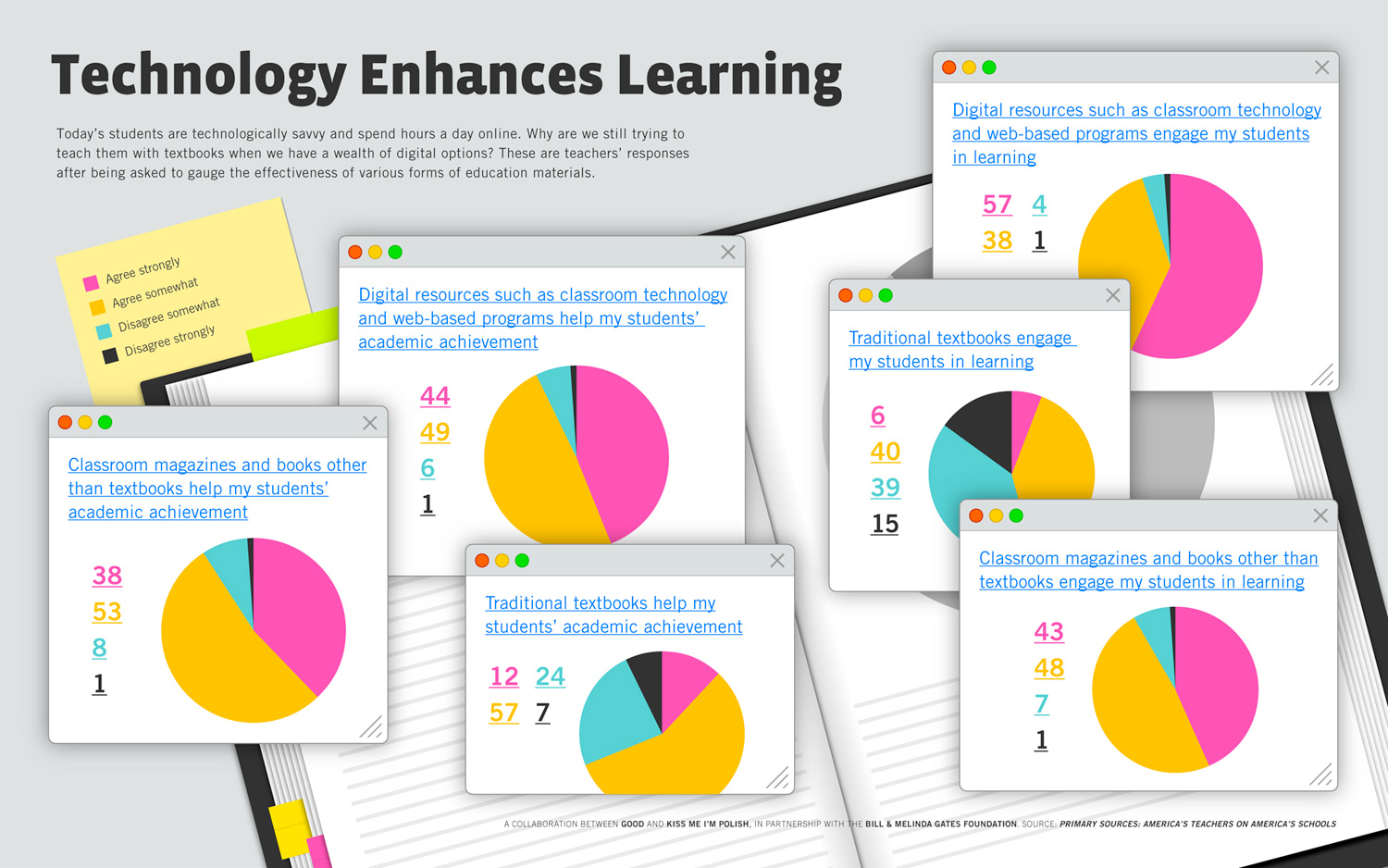Source: Good infographics
Archives For ebooks
As a rule I seldom add words to an infographic and simply let the visual do what is was designed to do—communicate the message. But I think it is important to put a qualifier on the notion of “new styles of K-12 teaching” being presented through this well made visual. While schools should be applauded for finally making the move to using educational technology we must also be very aware that most of the uptake of these digital resources falls into the very traditional realms of assessment, content delivery and monitoring and control of students.
Moving tests online do not change the fact that we are still reinforcing the damaging test culture that dominates K-12 and the horrible practice of teaching to the test. Digital textbooks may lighten a students load physically but using the network to deliver information just makes the practice of dumping content on students and pumping them to regurgitate it on an test all the more efficient. It is wonderful that teachers are using video content but moving to youtube over traditional video tape or DVD is just a more efficient way to deliver teacher centric content. There should be greater emphasis on the learner using video to create their own content making the learning experience active and dynamic.
On the positive note the infographic does show that the notion of going deeper with students in the flipped classroom is starting to gain some traction. However, hasn’t it always been the responsibility of the learner to cover the material outside of class and be prepared to explore it deeply face2face? Social media is also gaining traction and this is one area that has the potential to move education. Our species has always been highly social and once you allow learners the chance to exploit this intrinsic ability and to collaborate and communicate effectively in the learning process this may be one key factor that will bring about the most significant change in K-12.
[youtube]42E2fAWM6rA[/youtube]
This video uses the same methodology as the Lost Generation video to demonstrate that the content or substance of both sides of an argument are often identical. How we view, or more importantly, what perspective we view an argument will determine whether it is negative or positive.
In the New York Times article A Library to Last Forever Sergey Brin the co-founder and technology president of Google explains Google’s position on the Authors Guild and the Association of American Publishers settlement and also attempts to dispel a few myths. Brin’s most poignent point clearly identifies the potential we have for loosing an enormous amount of our intellectual property if something like the Google Books project is not allowed to move forward:
Today, if you want to access a typical out-of-print book, you have only one choice — fly to one of a handful of leading libraries in the country and hope to find it in the stacks.
Brin also points out that the Google settlement does not limit other organizations from doing the same thing and he hopes that Google efforts will blaze a trail for others to follow. The bottom line is that if Google or some other organization doesn’t make these out of books available we will eventually loose them. History doesn’t have to repeat it self.
































